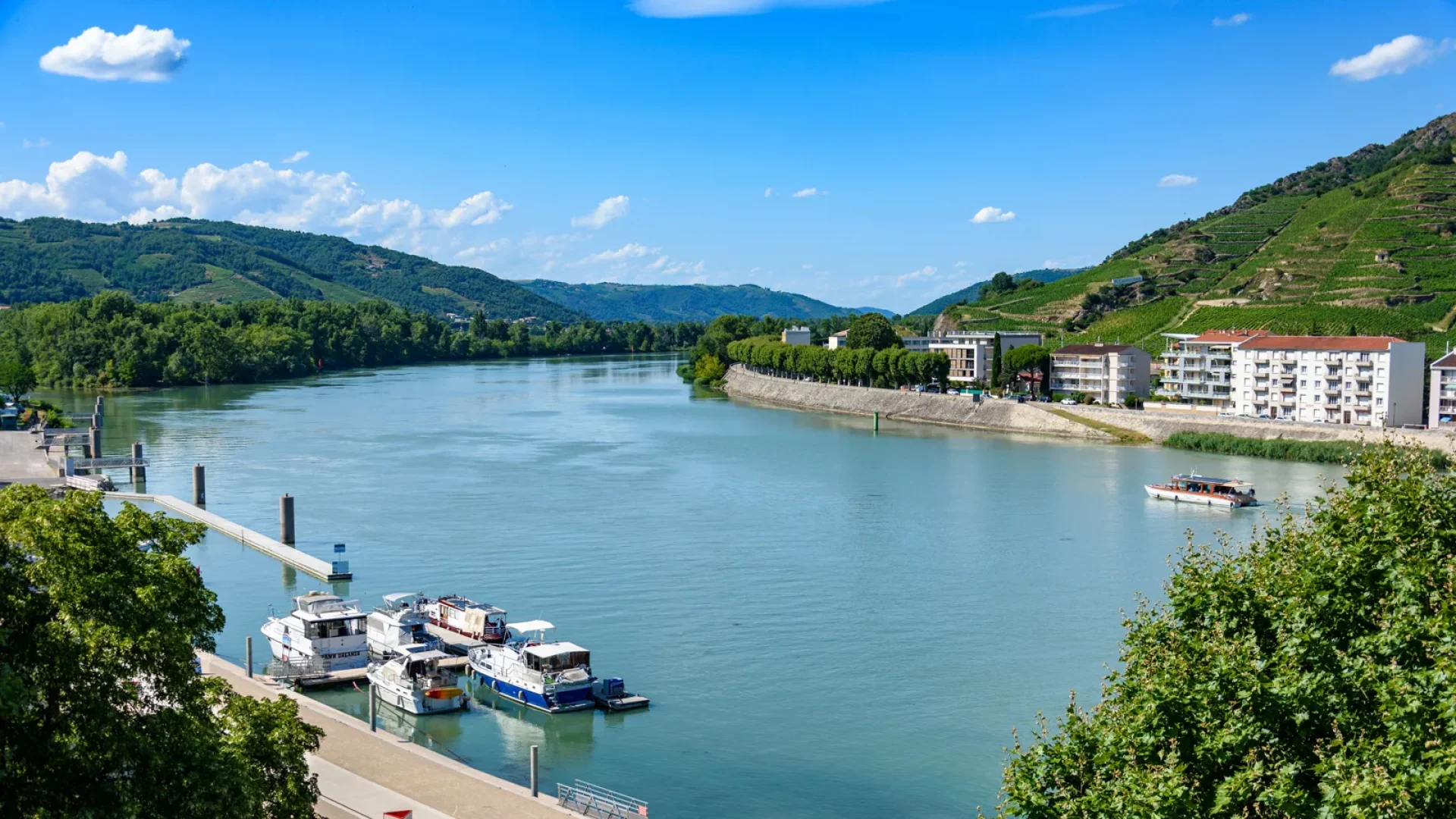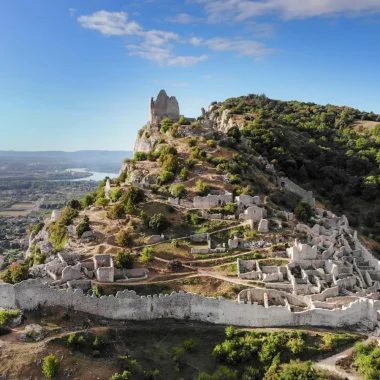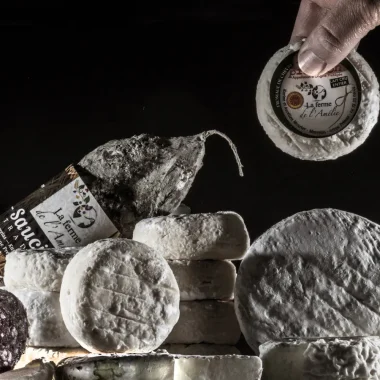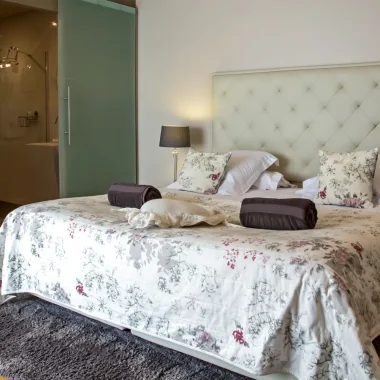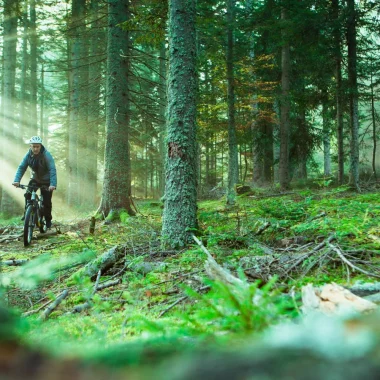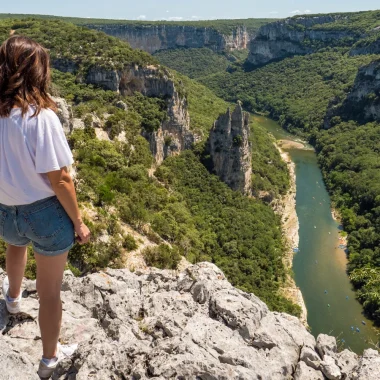The most powerful river in France
Bordering Ardeche for 160km, the Rhône is a vibrant reminder of the different civilisations who have lived along its banks. Still wild in places, it is sometimes like a small waterway with multiple branches, flowing through a protected natural area that is ideal for fishing. Elsewhere, it is wide and fast-flowing, dotted with big dams and hydro-electric power stations, yet still allowing the passage of river cruisers, shuttle services, excursion boats and ‘Freycinet’ cargo barges.
In spring and summer when the fruit trees and lavender flowers come into bloom, the light, aromas and colours of the valley become even more intense.
Prestigious wines from long established vineyards
Between Lyon and Avignon, the Rhône is fringed entirely with vines grown on terraces under the appellation of Côtes du Rhône or Côtes du Vivarais. Names such as Côte Rotie, Condrieu, St Joseph, Hermitage, and Côtes du Vivarais are music to the ears of wine buffs. The earliest traces of vines in the Rhône Valley go back to two centuries before Jesus Christ, when the Romans lived in the area and saw its potential for producing wine.


Remarkable architectural and industrial heritage
Where to begin? The Chateau of Tournon, perhaps; the character village of Beauchastel; the narrow footbridge at Rochemaure; or the episcopal towns of Viviers and Bourg St Andeol with their grand Bishop’s Palaces. More than 80 sites have been awarded Historic Monument status at the heart of the Art & History Region of the southern Vivarais, in recognition both of the richness of the area, but also local determination to safeguardit and spread awareness.
But although Ardeche is well known for its exceptional natural heritage, the department has also been a busy production centre for various industries across the centuries, including jewellery, paper, vehicle coachwork, lime production, and mineral extraction. Today, the Rhône Valley is home to Valrhôna chocolate, Lafarge cement, and the Donzere dam.
The ViaRhôna Green Way runs for 815km between Lake Geneva and the Camargue
The route hugs the bank of the Rhône on a safe, waymarked path that is almost completely flat and is designed for easy walking or cycling. You can pedal slowly, stop off to stroll through villages, and enjoy towns without having to worry about vehicles, whilst enjoying authentic Ardechois cuisine along the way. If you want to explore from water level, you will find boats offering anything from an overnight stay to a short cruise of a few days, a simple refreshment stop, or maybe an excursion of a few hours between Tournon, Valence and La Voulte.



How do I get to Ardeche without a car?
There is no station, airport or motorway in Ardeche, but it still very easy to get here, particularly down the Rhône Valley. The train line from Paris via Lyon to Marseille follows the river and carries a large number of TER trains that will transport bicycles free of charge. The two TGV stations serving Ardeche are Valence and Montélimar. An extensive bus network links the department’s key sites (link on the access page).
What is the mistral?
The Mistral is a strong, dry wind that blows in gusts from north to south, especially down the Rhône Valley. It has the advantage of blowing the clouds away and leaving sparkling blue skies. If you travel the ViaRhôna from south to north, you won’t forget it!
